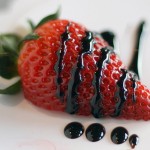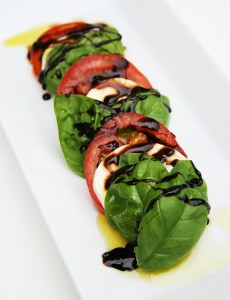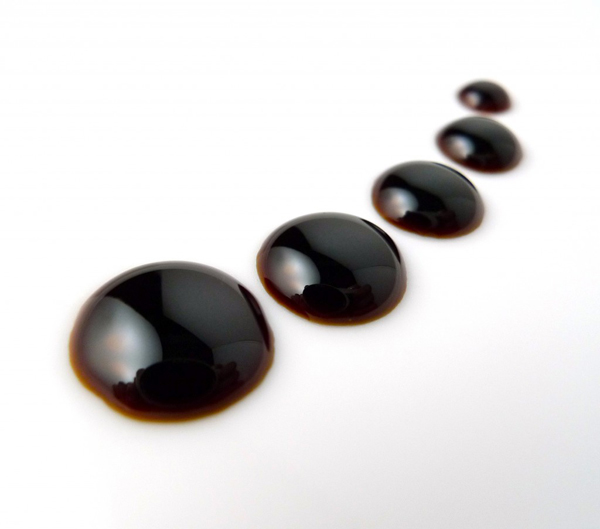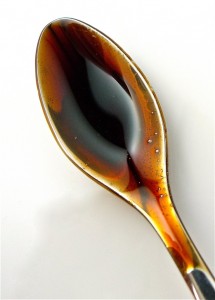 Balsamic reduction sauce is a gourmet finishing sauce that will make your friends and family think you’ve taken up a cooking class–but it’s just oh-so-easy! Drizzle on salads, bread, deliiicious on fish, this sauce is sweet, tart, and a must have in the kitchen!
Balsamic reduction sauce is a gourmet finishing sauce that will make your friends and family think you’ve taken up a cooking class–but it’s just oh-so-easy! Drizzle on salads, bread, deliiicious on fish, this sauce is sweet, tart, and a must have in the kitchen!
There are some bottled balsamic glazes out there, but from the few I’ve tried, they just don’t compare to homemade. They are either too light in color or the flavor is just flat out repugnant. A balsamic reduction should be sweet, tangy and intense, with a drizzable consistency, slightly thicker than molasses. Which brings up another advantage of making it at home: you can control the consistency and make it as thick as you like by increasing/decreasing the reduction time.
 Balsamic glaze has infinite applications: drizzle a few lines over a salad, or squeeze some decorative dots on an amuse bouche plate of melon and prosciutto. Maybe spoon a little syrup over a chunk of high-quality Parmesan, or garnish some puréed soup with a few drops or a swirl. Its one of those embellishments that can elevate a dish to another level.
Balsamic glaze has infinite applications: drizzle a few lines over a salad, or squeeze some decorative dots on an amuse bouche plate of melon and prosciutto. Maybe spoon a little syrup over a chunk of high-quality Parmesan, or garnish some puréed soup with a few drops or a swirl. Its one of those embellishments that can elevate a dish to another level.
Anyhow, this fancy-schmancy garnish is so easy to make: Reduce, cool and play with. It just requires patience in regards to the cooking time. Probably the hardest part is making sure that the reduction doesn’t burn. Just keep a vigilant eye towards the end. Lastly, beware: your house will smell strongly of vinegar when making this, and do not, under any circumstances, put your face directly over the pot of bubbling liquid, whether by accident or temptation. Unless of course, you actually enjoy the sting of acidic fumes in your respiratory passages and eyes…
- Balsamic Vinegar-whatever amount of vinegar you decide to reduce, you will end up with about less than a quarter of the original amount in syrup.
- Sugar (to taste)
- Hot Saucepan
- Whisk
Method:
- Pour the balsamic vinegar into the pan. Use enough so that you allow for it to reduce by half–I like to reduce a whole liter of vinegar and keep it on hand.
- Heat the pan to high.
- Whisk briskly, even prior to boiling. Once it starts boiling, keep whisking constantly to prevent burning.
- The vinegar naturally sweetens when reduced, but if you like a very sweet reduction, sprinkle in a tablespoon of sugar.
- Reduce by half, or until the vinegar takes on a syrupy quality. Allow to cool.
- To test the consistency, I like to take a spoon and drizzle a few drops onto a cool plate, or better yet, take a dry pastry brush and brush some glaze onto the same plate. I’ll then run my finger right over the cooled glaze to see how sticky it is. If the consistency is too thick, add a little water to the glaze, stir it up, and test again. If its too thin, return the pot to the heat. Whatever happens, don’t let it burn…

- Taste–delicious, isn’t it?



Leave a Reply